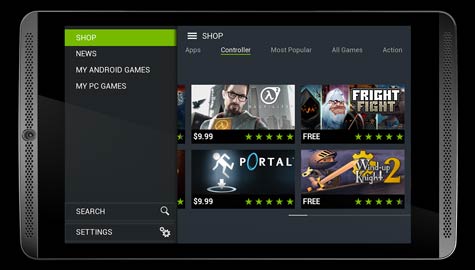
Shopping Simplified: 15 Tech Gifts for $50 and Under

Recently, I was at Dell’s Impressive Cloud Client Reviewers’ Day in the new Silicon Valley offices. There was a bit of talk about thin-client solutions. Right now, only two companies can truly go end-to-end with thin-client architecture: HP and Dell. With HP spinning off its PC unit, Dell may be the last full-solution vendor standing, since you need both clients and servers to pull off end-to-end thin-client. So Dell was certainly appreciative of HP’s unexpected Christmas present. But when we get down to only one vendor of scale doing a solution like this, we could have a perfect storm offering.
Let’s talk about the thin-client, perfect-storm situation.
The Sustaining Problems with Thin-Client Solutions
Network performance problems that plagued early thin-client efforts are largely gone, and with the MU-MIMO effort from Qualcomm going live and promising gigabit Ethernet speeds and low latency over wireless, even wirelessly connected thin-client projects shouldn’t be constrained on the network. Performance was a huge problem because traditional servers just weren’t designed for the individual loads that a thin-client platform would generate, and moving to a dedicated processor like Clear Cube didn’t generate the promised cost savings. This issue got sorted out with the NVIDIA Grid, which represented a brand-new look at how to build servers specifically for thin-clients.
The two problems that remained, though, were a lack of standards between vendors and a truly compelling thin-client solution that users would chase after.
And Then There Was One
But with HP effectively falling on its sword in this area, Dell is left as the only end-to-end, large-scale vendor standing, which means it can be the standard. Dell doesn’t have to worry about HP not working if it isn’t viable in the space anymore. And at least for the next year, while they sort out the separation, I can’t picture many companies turning to HP for new solutions in this space. Much like when IBM dominated the mainframe space, Dell should gain a similar standing over thin clients, which will raise some competitive bidding flags. But mostly it will remove the interoperability problem, because most will assume correctly that Dell will interoperate fine with itself.
Making Users Want It
Dell is calling its solution a “cloud client,” which is exactly on point. We know that users are, in general, getting more comfortable with the cloud. They are moving away from cable TV to use services like Netflix and Amazon Prime, online gaming is increasingly interesting with Sony making a big push, and storage, with services like OneDrive and iCloud, continues to gain traction — and so is BYOD.
We are waiting for a similar push of a thin-client service on users, and though we have seen small companies like Mainframe2 and OnLive try to drive the idea of a true cloud client, they don’t have the reach that Dell has. Amazon is working to bring out its own offering and it is clearly a force to be reckoned with, since the Amazon Cloud Services are often used in corporations as a way to get around IT bureaucracy and costs.
So both the technology and the users are ready for a thin-client solution. Now we are just waiting for that perfect offering.
Defining the Client-Focused Offering
In this age, you almost have to target the user with something at home first so they eventually want it at work. That is how the iPad, iPhone, Windows 95 and even Android (over a lot of IT objections) breached companies so quickly—users brought them in. Give users a thin-client container with all of their apps tied to always-connected hardware and give them a great appliance experience and they’ll likely want this over what they have.
Remember, in a thin-client offering, someone else handles upgrades, the hardware works like an appliance, the system remembers the state (so you can start exactly where you left off even if you go to another machine), and the data can be secured at the host.

Given that tablets are increasingly LTE connected, I think they are likely the best short-term choice for a universal client. Something like the NVIDIA Shield Tablet, which was designed to work with and come bundled with grid gaming platforms, could be the core of such a client offering. A tablet is useful when you don’t have a monitor and a keyboard, and it will really perform when you add both and connect it to MU-MIMO and an NVIDIA Grid-like back end just like a PC. You could have a portable keyboard and mouse for meetings and a full monitor, keyboard and mouse for your desktop.
A larger tablet with an attached keyboard like the Microsoft Surface or Lenovo’s Yoga might even be better for some, but the end goal would be to create something that was so much better than a PC experience that users chased it and drove it into companies, much like they did with the iPad, iPhone, BlackBerry and Windows 95.
Wrapping Up: On the Edge of Glory
A song came to mind as I finished this—Lady Gaga’s “On the Edge of Glory” should be the theme song for thin-clients since they are literally on the edge of glory and waiting for that one vendor to step up and deliver a user experience that will cause the market to flip. Dell is clearly in the lead, but the needed user focus hasn’t emerged yet. It feels so close, though, just a touch of vision, a dash of really cool hardware, and a pinch of awesome could transform cloud clients from interesting technology to the new world order. They are truly on the edge and if they can get pushed over that edge, we could have a cloud client perfect storm.
Rob Enderle is President and Principal Analyst of the Enderle Group, a forward-looking emerging technology advisory firm. With over 30 years’ experience in emerging technologies, he has provided regional and global companies with guidance in how to better target customer needs; create new business opportunities; anticipate technology changes; select vendors and products; and present their products in the best possible light. Rob covers the technology industry broadly. Before founding the Enderle Group, Rob was the Senior Research Fellow for Forrester Research and the Giga Information Group, and held senior positions at IBM and ROLM. Follow Rob on Twitter @enderle, on Facebook and on Google+












